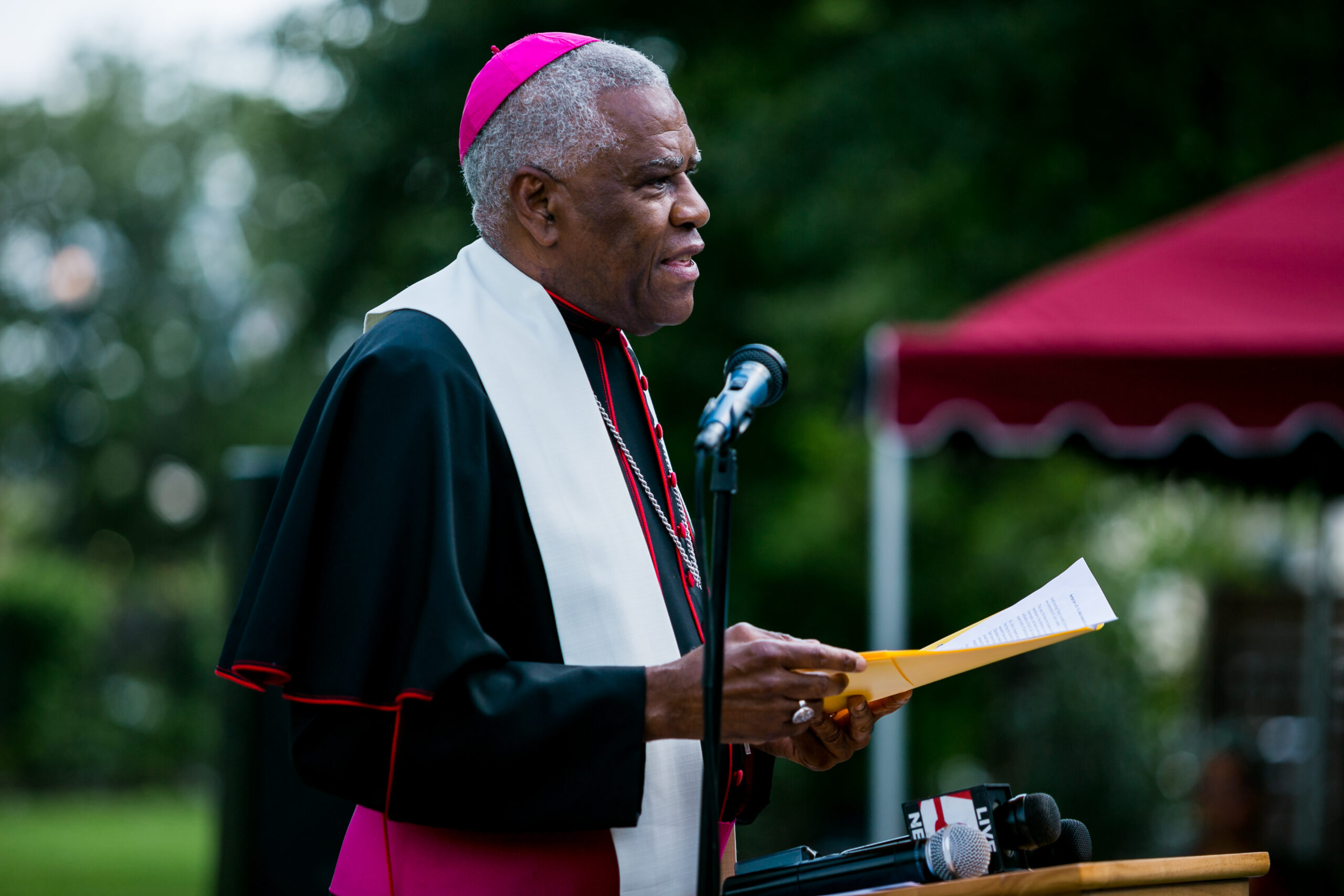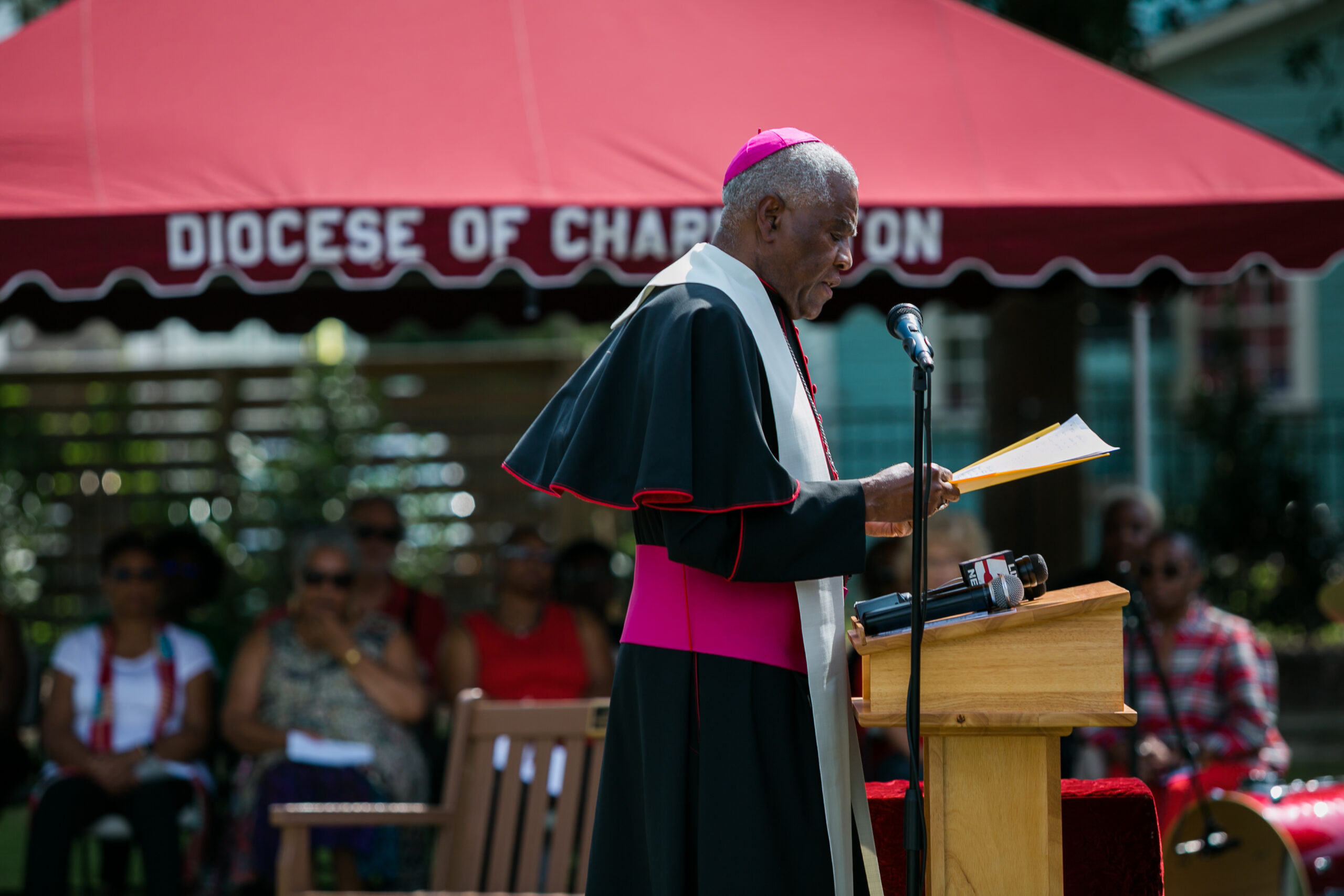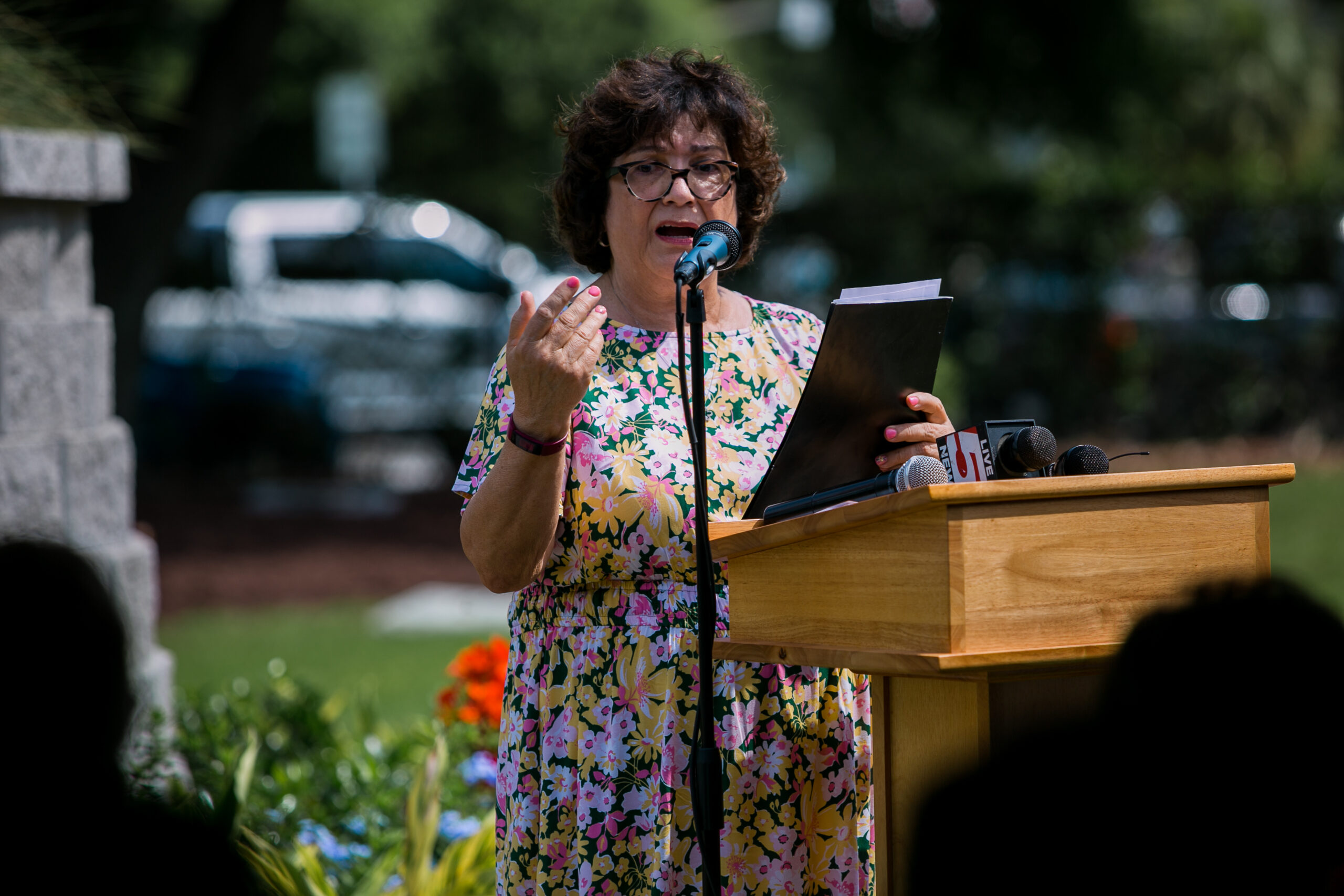In 1843, the Roman Catholic Diocese of Charleston established St. John Cemetery near the corner of Coming and Sheppard Streets as a consecrated burial ground for the enslaved and free Black Catholics of Charleston. Research suggests that the remains of more than 1,000 souls were interred here before the last known burial in 1930.
By 1880, the Diocese constructed a small, wood-frame church adjacent to the cemetery, facing Coming Street. Founded as Immaculate Conception Church, the parish was only the second established for Black Catholics in segregated Charleston, the first being St. Peter’s Church. In 1904, the Sisters of Charity of Our Lady of Mercy converted the Immaculate Conception church building for use as a school for the education of Black Catholic children. The Oblate Sisters of Providence assumed responsibility for the school in 1917, with four sisters teaching 180 children.
Increased student enrollment led to the construction of a new brick building on the western portion of the burial ground in 1923. When the school relocated to a larger building at 200 Coming Street in 1928, the structure was rededicated as Immaculate Conception Church.
Immaculate Conception closed in 1967, the same year construction of the Septima P. Clark Parkway concluded. The highway’s route directly impacted the northern portion of the cemetery without appropriate attention to the presence of likely graves. By 1974, none of the structures built by the congregation remained and a majority of surviving headstones were lost in subsequent decades. In 2021, the Diocese transformed the vacant site into a memorial park to honor the memory of the Immaculate Conception parish and those buried at St. John Cemetery.
On June 19, 2023, Bishop Jacques Fabre-Jeune, CS, rededicated and blessed the sacred grounds as a fitting resting place for the faithful departed.














